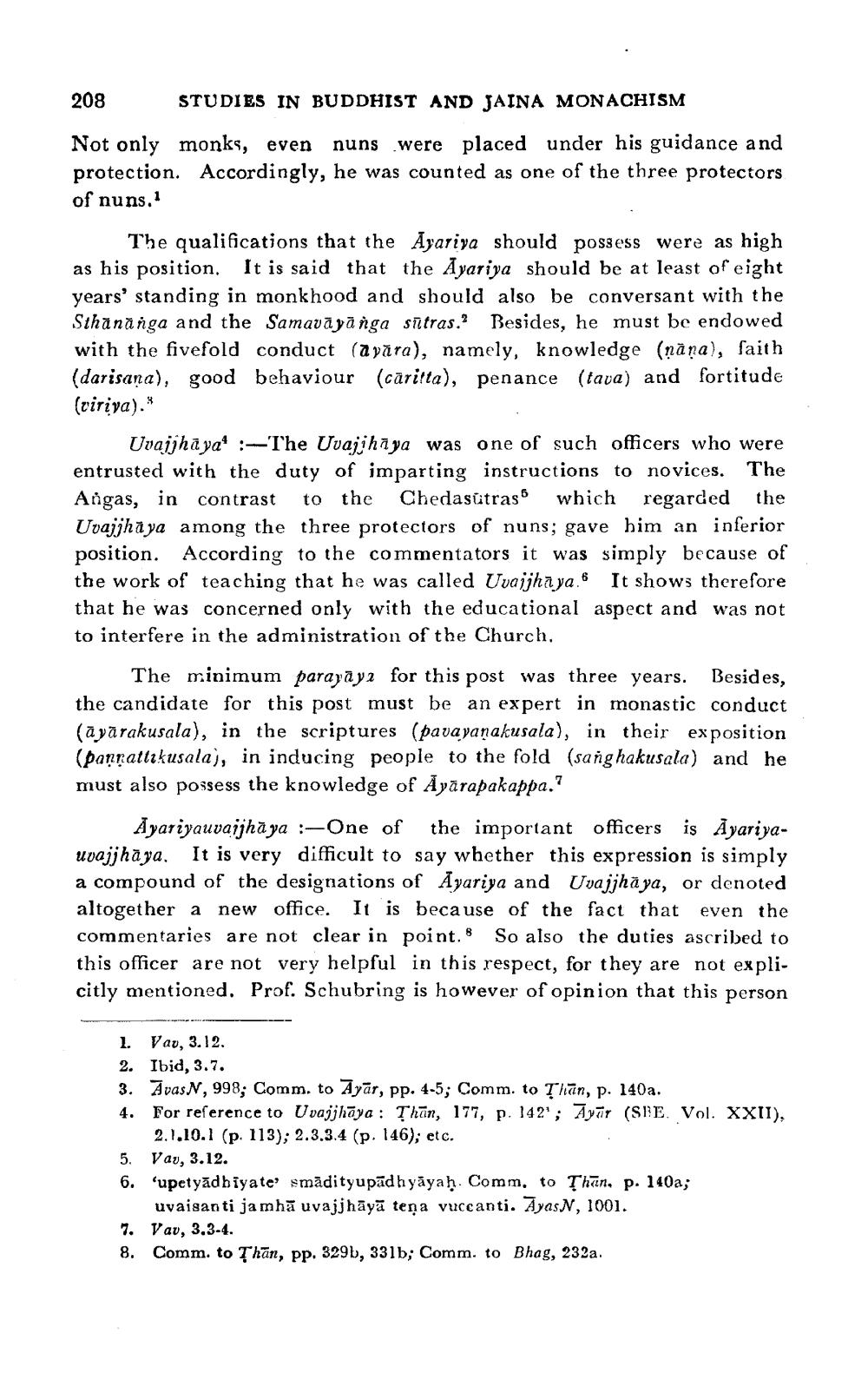________________
208
STUDIES IN BUDDHIST AND JAINA MONACHISM
Not only monks, even nuns were placed under his guidance and protection. Accordingly, he was counted as one of the three protectors of nuns.
The qualifications that the Ayariya should possess were as high as his position. It is said that the Ayariya should be at least of eight years' standing in monkhood and should also be conversant with the Sthânănga and the Samavāyā nga shtras. Besides, he must be endowed with the fivefold conduct (ayāra), namely, knowledge (nana), faith (darisaņa), good behaviour (căritta), penance (tava) and fortitude (ciriya)."
Uvajjhāya" :- The Uvajjhāya was one of such officers who were entrusted with the duty of imparting instructions to novices. The Angas, in contrast to the Chedasūtras which regarded the Uvajjhaya among the three protectors of nuns; gave him an inferior position. According to the commentators it was simply because of the work of teaching that he was called Uvajjha ya.. It shows therefore that he was concerned only with the educational aspect and was not to interfere in the administration of the Church.
The minimum parayay2 for this post was three years. Besides, the candidate for this post must be an expert in monastic conduct (āyārakusala), in the scriptures (pava yanakusala), in their exposition (pannattakusala), in inducing people to the fold (sang hakusala) and he must also possess the knowledge of Ayārapakappa.?
Ayariyauvaijhāya :-One of the important officers is Ayariyauvajjhāya. It is very difficult to say whether this expression is simply a compound of the designations of Ayariya and Uvajjhāya, or denoted
. a new office. It is because of the fact that even the commentaries are not clear in point. 8 So also the duties ascribed to this officer are not very helpful in this respect, for they are not explicitly mentioned. Prof. Schubring is however of opinion that this person
1. Vav, 3.12. 2. Ibid, 3.7. 3. AvasN, 998; Comm. to Ayar, pp. 4-5; Comm. to Țhan, p. 140a. 4. For reference to Uvajjhāya : Thān, 177, p. 142; Ayar (SHE. Vol. XXII),
2.1.10.1 (p. 113); 2.3.3.4 (p. 146); etc. 5. Vav, 3.12. 6. 'upetyadhiyate smādityupādhyāyaḥ. Comm. to Than. p. 140a;
uvaisan ti ja mhā uvajjhāyā tena vuccanti. AyasN, 1001. 7. Vav, 3.3-4. 8. Comm. to Thān, pp. 329b, 331b; Comm. to Bhag, 232a.




